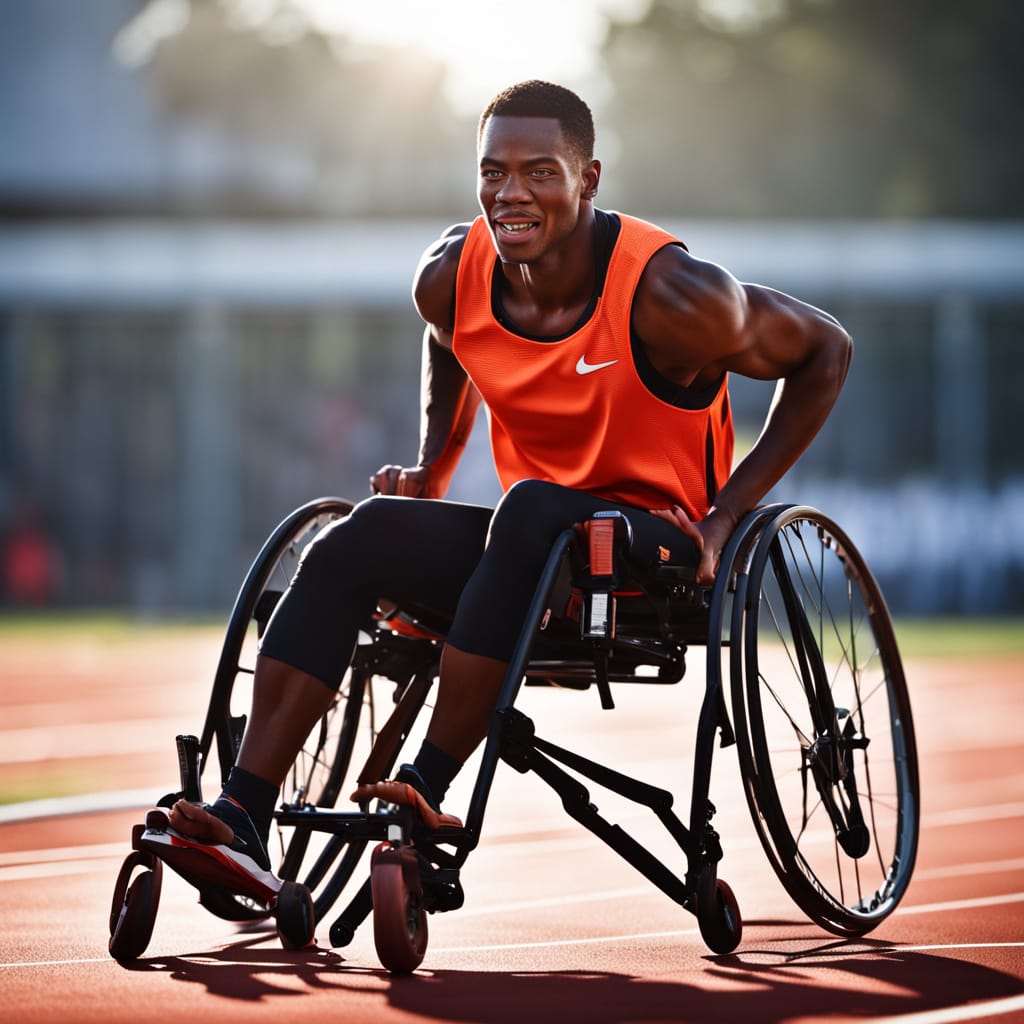The Paralympics
The Paralympics: A Comprehensive Overview

The Paralympics is a global event that celebrates the athletic prowess and determination of athletes with disabilities. First held in 1960, it has grown significantly, garnering attention from around the world. This blog post delves into the origin and history of The Paralympics, its global popularity, evolution, political and social significance, sports involved, and its future.
The Origin and History of The Paralympics
The Paralympics originated from a small but revolutionary idea. The first games were organized by Sir Ludwig Guttmann in 1948. Guttmann, a neurologist, was a pioneer in spinal cord injury rehabilitation. He believed that sport could play a crucial role in the recovery and rehabilitation of injured soldiers. This belief led to the establishment of the Stoke Mandeville Games, which took place in England. Initially, these games were a local event for athletes with spinal cord injuries, but they quickly gained traction.
The Stoke Mandeville Games provided a platform for athletes with disabilities to showcase their skills and compete in sports. The success of these games laid the foundation for what would become the modern Paralympic Games. In 1960, the first official Paralympic Games were held in Rome, Italy. These games were held shortly after the Rome Olympics and marked a significant milestone in the history of disability sports.
Since then, it has evolved into a major international sporting event. Held every four years, it attracts athletes from around the globe. The event is governed by the International Paralympic Committee (IPC), which was founded in 1989. The IPC plays a crucial role in promoting and organizing the games, ensuring that athletes with disabilities have the opportunity to compete at the highest level.
The history of The Paralympics is a testament to the resilience and determination of athletes with disabilities. From its humble beginnings, it has grown into a global phenomenon, inspiring millions and showcasing the extraordinary achievements of athletes from all walks of life.
The Popularity of The Paralympics Globally
The Paralympics has gained immense popularity across the globe. This global recognition is due to various factors, including the increasing visibility of the games and the growing support from media and sponsors. It attracts athletes from over 160 countries, making it one of the most inclusive sporting events in the world.
In recent years, it has seen a significant rise in viewership and media coverage. Major broadcasters, including the BBC, NBC, and Channel 4, provide extensive coverage of the games, bringing the action to millions of viewers worldwide. The increased media exposure has played a crucial role in raising awareness about The Paralympics and highlighting the achievements of athletes with disabilities.
It also benefits from the support of various international organizations and sponsors. These partnerships help to fund the games and provide resources for athletes. Additionally, corporate sponsorships contribute to the overall success of The Paralympics by increasing its visibility and reach.
Participating countries in The Paralympics come from every corner of the world. Nations such as the United States, China, Great Britain, and Australia have been prominent in the games, showcasing their athletes’ talents and achievements. The inclusion of athletes from diverse countries reflects the global nature of The Paralympics and its ability to bring together people from different cultures and backgrounds.
Its popularity continues to grow, driven by the passion and dedication of athletes and the support of fans and sponsors. As the games evolve, they will undoubtedly attract even more attention and inspire future generations of athletes.
The Evolution of The Paralympics
The Paralympics has undergone significant changes since its inception. These changes reflect the growing recognition of disability sports and the increasing professionalism of the games. One of the most notable developments is the expansion of sports included in The Paralympics.
Initially, it featured only a few sports, primarily focused on wheelchair athletics. However, over the years, the range of sports has expanded significantly. Today, The it includes a wide variety of sports, such as swimming, basketball, and skiing, catering to different types of disabilities. This expansion has made The Paralympics more inclusive and diverse, allowing athletes with various impairments to compete.
The classification system used in The Paralympics has also evolved. Classification ensures that athletes compete against others with similar levels of ability. This system has become more refined over time, with the introduction of detailed classification categories for different sports. The goal is to create a level playing field and ensure fair competition.
Another significant evolution is the integration of technology in The Paralympics. Advances in technology have enhanced both the athletes’ performance and the viewers’ experience. For example, innovations in prosthetics and wheelchair design have allowed athletes to compete at higher levels. Additionally, technological improvements in broadcasting and media coverage have made it easier for fans to follow the games and support their favorite athletes.
The evolution of The Paralympics reflects the ongoing efforts to improve the games and enhance the experience for athletes and spectators alike. As it continues to grow and develop, it will likely see further innovations and changes that will shape its future.
The Significance of The Paralympics Politically and Socially
It holds significant political and social importance. Politically, The Paralympics serves as a platform for promoting inclusivity and equality. The games highlight the achievements of athletes with disabilities and challenge societal perceptions of disability. By showcasing the talents and capabilities of these athletes, it helps to break down stereotypes and promote a more inclusive society.
It also plays a role in influencing disability policies and practices. Governments and organizations around the world often look to The Paralympics as a model for promoting disability rights and accessibility. The games serve as a reminder of the importance of creating an inclusive environment where individuals with disabilities can thrive.
Socially, it has a profound impact on communities. The games inspire people with disabilities to pursue their athletic dreams and challenge them to overcome barriers. The Paralympics also fosters a sense of unity and camaraderie among athletes and fans. The shared experience of competing and cheering for athletes creates a strong sense of community and support.
Furthermore, The Paralympics promotes physical activity and healthy living. By highlighting the achievements of athletes with disabilities, the games encourage people of all abilities to engage in sports and physical exercise. This emphasis on health and fitness contributes to overall well-being and quality of life.
Overall, The Paralympics has a significant impact on both political and social levels. The games promote inclusivity, challenge societal perceptions, and inspire individuals to achieve their full potential.
The Sports Involved in The Paralympics
The Paralympics features a diverse range of sports, catering to athletes with various types of disabilities. These sports include both adapted versions of traditional Olympic sports and unique sports developed specifically for The Paralympics.
One of the most popular sports in The Paralympics is wheelchair basketball. This fast-paced game involves athletes competing in basketball while using wheelchairs. The sport requires skill, strategy, and teamwork, making it a thrilling event for spectators.
Another prominent sport is para-swimming. Athletes with physical and visual impairments compete in various swimming events, showcasing their speed and technique in the pool. Para-swimming is known for its competitive nature and the incredible performances of its athletes.
Para-athletics is another major component of The Paralympics. This sport includes track and field events such as sprints, marathons, and jumps. Athletes with different types of impairments compete in these events, demonstrating their remarkable abilities and determination.
The Paralympics also features winter sports such as para-alpine skiing and para-snowboarding. These sports involve athletes navigating challenging terrain while using specialized equipment. The winter sports showcase the versatility and skill of athletes in extreme conditions.
In addition to these sports, The Paralympics includes events like goalball, boccia, and sitting volleyball. Each sport has its own unique set of rules and adaptations, allowing athletes with different impairments to compete at the highest level.
The variety of sports in The Paralympics reflects the diversity of athletes and their abilities. The inclusion of different sports ensures that there is something for everyone, making The Paralympics an exciting and inclusive event.
The Future of The Paralympics
The future of The Paralympics looks promising, with continued growth and development on the horizon. Several factors will shape the future of The Paralympics, including advancements in technology, changes in the classification system, and the increasing global reach of the games.
One key area of focus for the future of The Paralympics is the integration of new technologies. Innovations in equipment and assistive devices will enhance athletes’ performance and ensure a more level playing field. Additionally, technological advancements in broadcasting and media will continue to improve the viewing experience and reach a wider audience.
The classification system will also continue to evolve to ensure fair competition. As more sports are added and existing sports are refined, the classification system will adapt to accommodate new developments and ensure that athletes compete on an equal footing.
The global reach of The Paralympics will likely expand as more countries participate and more athletes showcase their talents. Increased international participation will contribute to the overall growth and success of The Paralympics, making it a truly global event.
Moreover, The Paralympics will continue to play a crucial role in promoting inclusivity and challenging societal perceptions of disability. The games will serve as a platform for advocating disability rights and raising awareness about the achievements of athletes with disabilities.
In conclusion, The Paralympics has a bright future ahead. With ongoing advancements and increased global participation, The Paralympics will continue to inspire and captivate audiences worldwide, celebrating the extraordinary achievements of athletes with disabilities.
The Paralympics stands as a testament to the power of sport in transforming lives and breaking down barriers. From its origins in the Stoke Mandeville Games to its status as a global phenomenon, The Paralympics has grown and evolved, reflecting the resilience and determination of athletes with disabilities. As the games continue to develop, they will undoubtedly inspire future generations and continue to make a positive impact on society.






